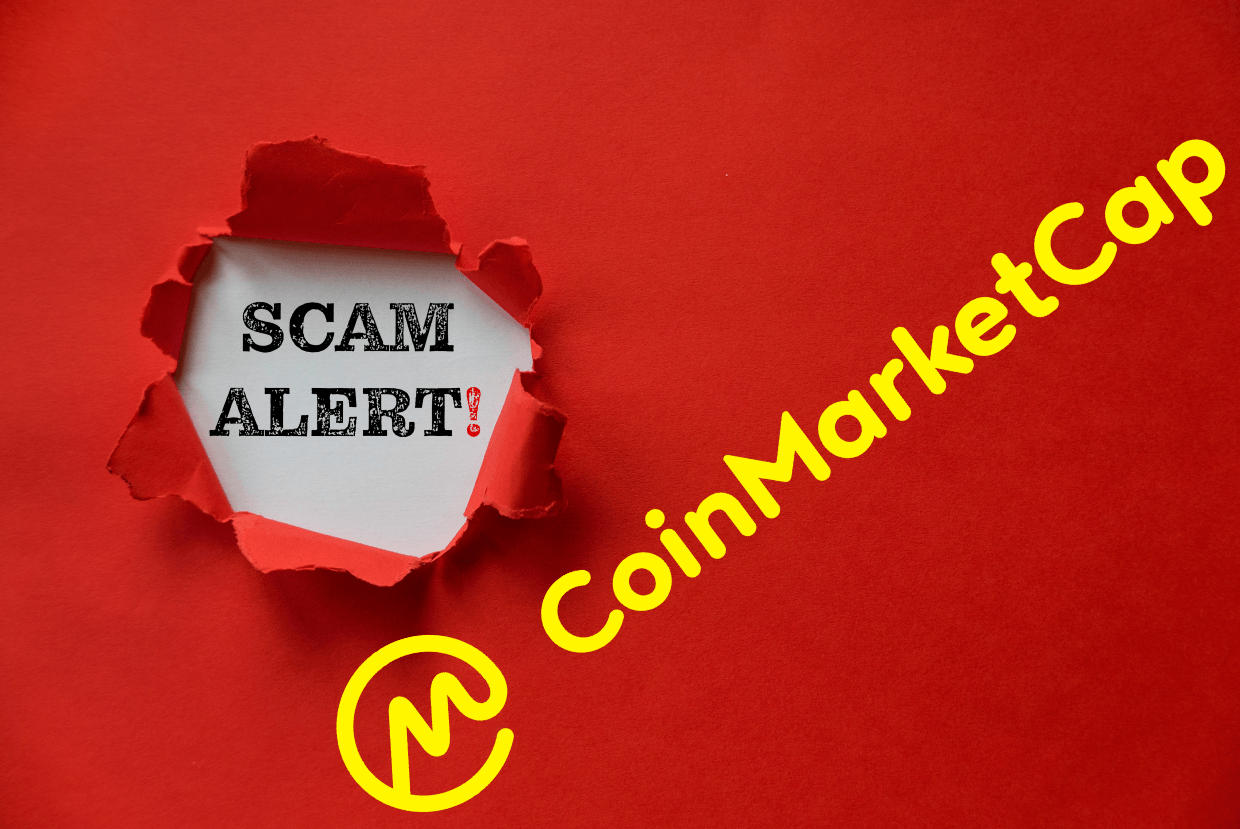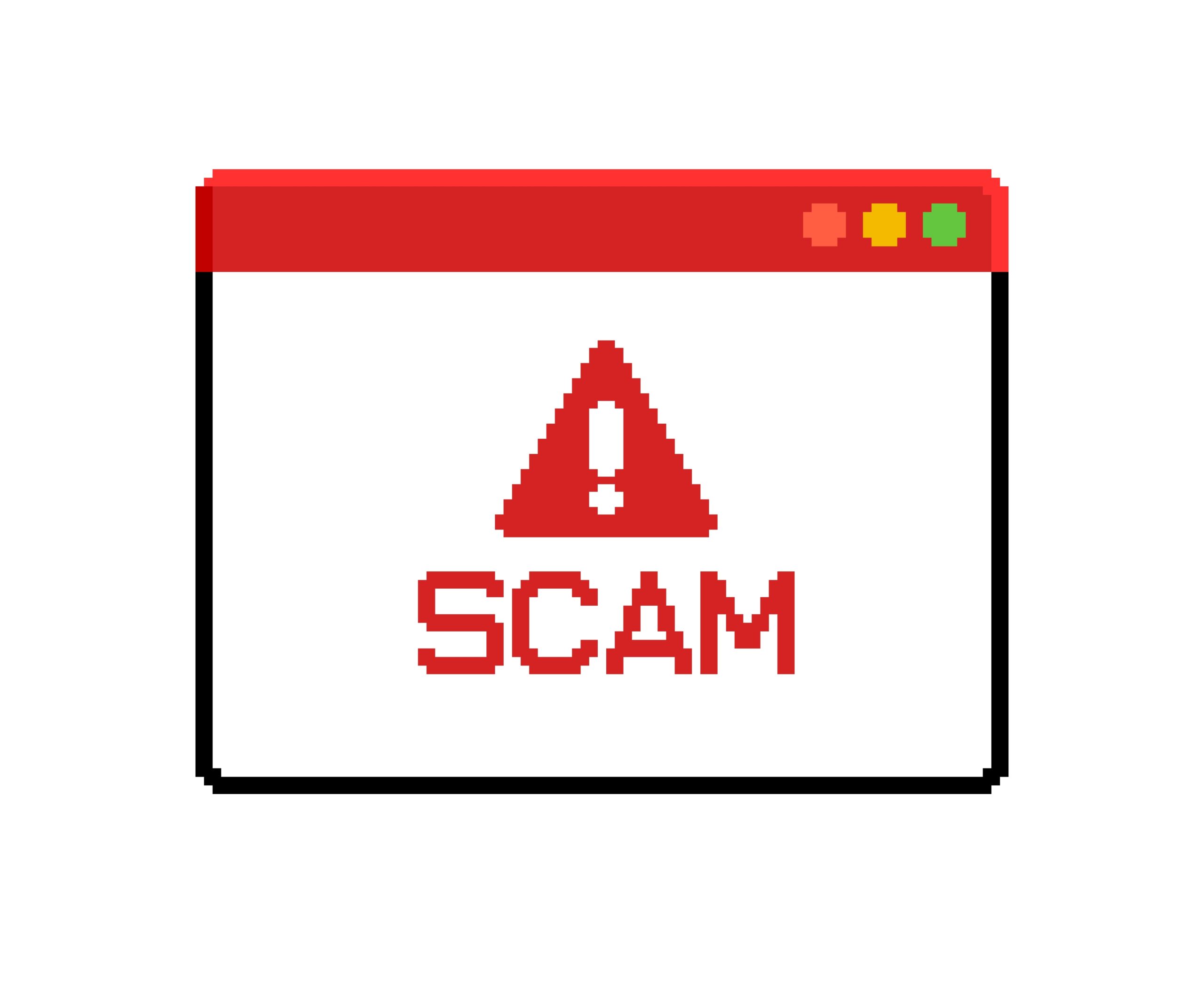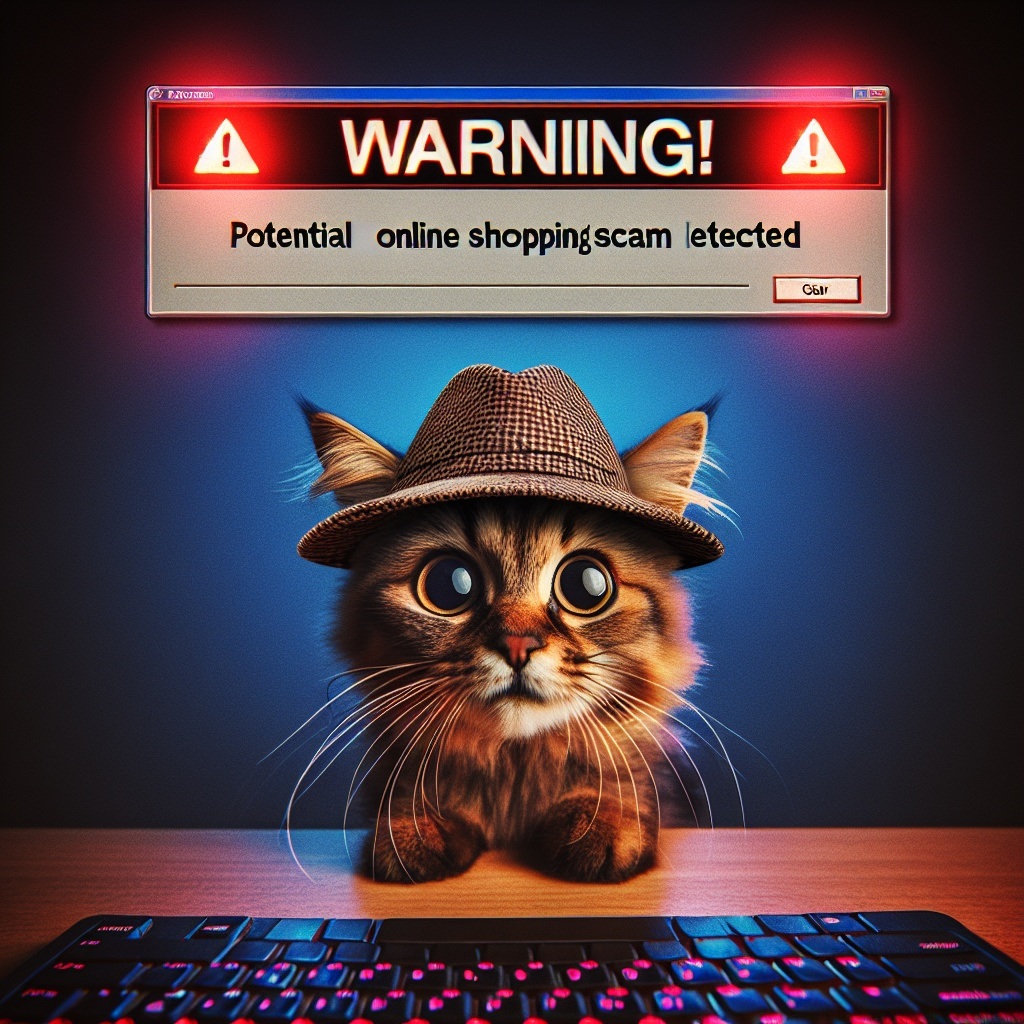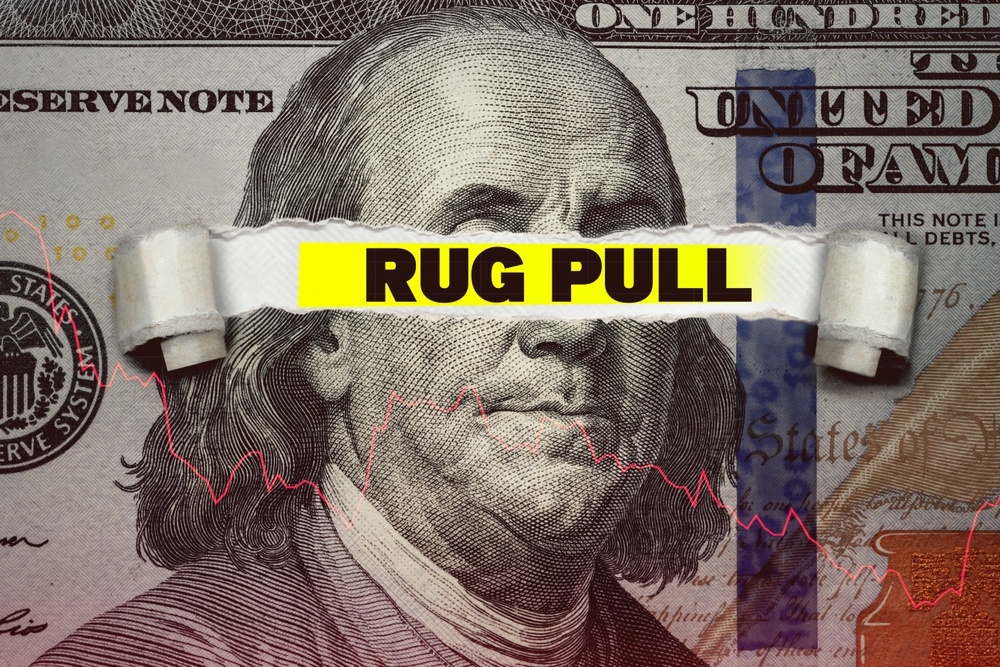CMC is banking $$$$$ or Crpyto with listing 93% Scam Tokens: Is CoinMarketCap’s Listing Process Enabling Scammers? How Investors Can Protect Themselves

Have you noticed how many new coins and tokens appear on CoinMarketCap every day? Ever wondered why some of them turn out to be scams? It’s a troubling trend that’s costing investors millions and shaking confidence in the crypto market.

The Problem: Unvetted Listings Leading to Scams
As cryptocurrencies continue to gain mainstream attention, more and more investors are diving into the market hoping to find the next big thing. However, the sheer number of new tokens popping up can be overwhelming—and dangerous. Many of these tokens are unvetted, and some are outright scams designed to swindle unsuspecting investors.
How Scam Tokens Flood the Market
Creating a new cryptocurrency token has become relatively easy, thanks to platforms like Ethereum and Binance Smart Chain. Scammers take advantage of this by launching tokens with catchy names and flashy websites to lure in investors. They might promise revolutionary technology or astronomical returns, but in reality, they’re setting up a classic “rug pull.”
For example, the infamous PancakeBunny exploit in 2021 saw scammers manipulate the token’s price before making off with millions. Another case is the “Squid Game” token, which capitalized on the popularity of the Netflix show, surging in price before the developers vanished, taking the funds with them.
Investors Falling Victim to Fraudulent Projects
It’s not just novice investors who get caught up in these schemes. The fear of missing out (FOMO) can drive even experienced traders to take risks on unproven tokens. Scammers often use social media hype, fake endorsements, and misleading information to create a sense of legitimacy and urgency.
Consider the case of the Fake Elon Musk Giveaway, where scammers collected over $2 million in cryptocurrencies by pretending to be the tech billionaire. Investors eager to profit from the next big opportunity can find themselves ensnared by such tactics.
CoinMarketCap’s Role in the Issue
CoinMarketCap is one of the most popular platforms for tracking cryptocurrency prices and market capitalizations. Many investors rely on it as a source of truth. However, the platform’s listing process allows for new tokens to be added with minimal verification. This openness can be a double-edged sword.
By listing tokens without thorough vetting, CoinMarketCap inadvertently provides scammers with a veneer of credibility. When a token appears on such a reputable site, investors may assume it’s legitimate. Unfortunately, this isn’t always the case, and the consequences can be severe.
So, what can be done to address this growing problem? How can investors protect themselves, and what role should platforms like CoinMarketCap play in safeguarding the community?

Understanding CoinMarketCap’s Listing Policies
I’ve often found myself pondering how scam tokens manage to sneak their way into prominent platforms like CoinMarketCap. It’s a question that many in our community have asked, especially after witnessing friends or even ourselves falling prey to dubious projects. Let’s take a closer look at how CoinMarketCap’s listing policies might be contributing to this problem.
The Criteria for Listing New Tokens
CoinMarketCap has grown exponentially over the years, becoming the go-to source for cryptocurrency rankings and data. To accommodate the burgeoning number of new tokens, they’ve established criteria for listing that, on the surface, seem straightforward. Generally, a project needs to meet basic requirements like having a functioning website, an active blockchain or proof of token existence, and some trading activity on exchanges.
However, these criteria don’t delve deep into the legitimacy of the projects. For example, a token could have an impressive website and be traded on smaller exchanges, but still lack a genuine team or a viable product. This means that, unfortunately, the door is open for less-than-honest projects to gain visibility alongside legitimate ones.
Lack of Rigorous Verification Processes
The real crux of the issue lies in the verification process—or rather, the lack thereof. CoinMarketCap doesn’t extensively vet the teams behind new tokens or their claims. There isn’t a thorough background check or a requirement for projects to provide detailed audits. This minimal oversight can be likened to leaving the front door unlocked in a rough neighborhood; it’s only a matter of time before trouble finds its way in.
Consider the case of the token “ExampleCoin” (a hypothetical name for illustration). It met the basic listing criteria and was promptly added to CoinMarketCap. Investors saw it listed and assumed it was credible, only to find out later that the project was a sham orchestrated by anonymous developers who vanished with the funds.
Implications for Investor Safety
This lack of stringent verification has serious implications for all of us. When platforms like CoinMarketCap list tokens without thorough vetting, it inadvertently gives them a stamp of legitimacy. New investors, in particular, might interpret a listing as an endorsement, not realizing the inherent risks.
As a result, people invest their hard-earned money into projects that may have no intention of delivering on their promises. It’s not just about financial loss; it’s about the erosion of trust in the entire crypto ecosystem. As the saying goes:
“Trust takes years to build, seconds to break, and forever to repair.”
We don’t want a few bad actors to tarnish the reputation of an industry that holds so much potential for innovation and financial freedom.
So, what can be done to bridge this gap between accessibility and security? How can platforms maintain open listings while protecting investors from scams? These are the questions we need to explore next.

The Alarming Statistics: High Percentage of Risky Tokens
When I came across the claim that nearly 93% of tokens could be risky or fraudulent, I was both shocked and concerned. The crypto market, which holds so much potential for innovation and financial growth, is also a playground for bad actors preying on unsuspecting investors. It’s a stark reminder that while opportunities abound, so do dangers.
“The cryptocurrency market is like the Wild West—full of opportunities but also rife with outlaws.”
Examining the “93% Tokens” Claim
The figure suggesting that 93% of tokens are potentially risky isn’t pulled out of thin air. Various reports and analyses over the years have highlighted the high failure rate of cryptocurrency projects. For instance, a study found that a large percentage of Initial Coin Offerings (ICOs) never make it past the funding stage or shut down shortly after raising capital.
Factors contributing to this alarming statistic include:
- Lack of regulatory oversight allowing fraudulent projects to emerge.
- Inexperienced teams without the skills to deliver on promises.
- Intentional scams designed to deceive and steal from investors.
These findings underscore the importance of due diligence when considering new investments in the crypto space.
Analyzing the Proportion of Scam Tokens
Looking deeper into the numbers, it’s clear that the proportion of scam tokens is significant. Scammers often exploit the hype around cryptocurrencies, launching tokens that have little to no real-world utility. They may use sophisticated marketing tactics to create FOMO (Fear Of Missing Out), enticing investors to buy in quickly without thorough research.
Common characteristics of these scam tokens include:
- Anonymous or fake team members.
- Unrealistic promises of high returns.
- Lack of a clear roadmap or whitepaper.
- Hasty listings on popular platforms without proper vetting.
By flooding the market with such tokens, scammers dilute investor confidence and tarnish the reputation of legitimate projects.
Case Studies of Notorious Scam Coins
There are countless stories of investors losing their hard-earned money to scam coins. In one instance, a project launched with great fanfare, boasting a revolutionary technology that promised to disrupt the industry. Investors flocked to buy in, only to find that the development team vanished overnight, taking all the funds with them. In another case, a token mimicked the branding of a successful project, deceiving people into thinking it was an official extension.
These incidents highlight common red flags:
- Impersonating or copying established projects.
- Promising guaranteed profits with little to no risk.
- Pressuring investors to act quickly before “it’s too late.”
Such cases serve as cautionary tales, emphasizing the need for vigilance in a market that can be both exciting and treacherous. But with so many pitfalls, how are these scam tokens able to infiltrate popular platforms so easily, and what can we do to protect ourselves?

How Scammers Exploit Listing Platforms
It’s unsettling to see how scammers have mastered the art of exploiting listing platforms to further their deceptive schemes. They know that platforms like CoinMarketCap are where investors flock to discover new opportunities. By appearing on these sites, they gain a veneer of legitimacy that’s hard for the average person to question. Let’s see how they pull this off.
Creating Legitimate-Looking Projects
Scammers start by crafting projects that look every bit as professional as genuine ones. They invest in sleek website designs, produce detailed whitepapers filled with technical jargon, and even set up active social media accounts. Some go as far as forging team profiles on LinkedIn, complete with fake endorsements and connections.
For example, there was a token that gained significant attention due to its promise of revolutionizing decentralized finance. The website showcased a team of supposed experts, and their roadmap outlined ambitious milestones. However, further investigation revealed that the team photos were stock images, and the so-called experts didn’t exist. It was all a façade to lure in unsuspecting investors.
Manipulating Market Data and Hype
Once they’ve established a credible front, scammers turn to manipulating market data to create hype. They may inflate trading volumes through wash trading, where they trade with themselves to simulate activity. They might also coordinate pump-and-dump schemes, driving up the price of the token before selling off their shares and leaving investors with worthless assets.
I’ve seen tokens skyrocket in value overnight, making it to the top gainers list on listing platforms. The sudden surge creates buzz, drawing in more investors afraid of missing out on the next big thing. But this frenzy is often manufactured. Behind the scenes, scammers are orchestrating every move, pulling the strings to their advantage.
Deceiving Investors Through False Promises
Perhaps the most insidious tactic is the use of false promises. Scammers exploit the hopes and dreams of investors by guaranteeing unrealistically high returns or claiming partnerships with reputable companies. They might announce upcoming features or integrations that are entirely fabricated.
Consider the case of a token that promised instant wealth through a revolutionary mining algorithm. They claimed partnership with a leading tech giant, which turned out to be completely false. Excited investors poured money into the project, only to watch it disappear along with the scammers.
“A lie travels around the globe while the truth is putting on its shoes.” – Mark Twain
This quote hits home when thinking about how quickly false information can spread in the crypto world. Scammers rely on this rapid dissemination to reach as many victims as possible before the truth catches up.
So, knowing these tactics, how do we shield ourselves and the community from falling prey to such schemes? Is there a way to strengthen our defenses against these cunning maneuvers? I believe there is, and it’s something we’ll delve into next.

The Impact on the Crypto Community
I’ve been part of the crypto world for years, and it’s been incredible to watch it grow. But lately, something has been bothering me. The rise of scam tokens isn’t just hurting individual investors; it’s shaking the very foundation of trust that the crypto community is built on.
Erosion of Trust in Cryptocurrency Markets
When scammers flood the market with fraudulent tokens, it creates a ripple effect. Investors start questioning the legitimacy of not just new projects, but even established ones. I remember a friend telling me, “I feel like I can’t trust any new coin anymore.” This sentiment is becoming all too common.
Trust is the backbone of any financial system. In crypto, where decentralization means there’s no central authority to guarantee transactions, trust is everything. Each scam token erodes that trust bit by bit, making everyone more skeptical and hesitant to participate.
Financial Losses and Emotional Toll on Investors
The obvious impact is financial. People are losing their hard-earned money to these scams. I’ve read stories on forums where individuals have lost their life savings, hoping to catch the next big thing. But it’s not just about the money.
The emotional toll is significant. Imagine the stress and anxiety of realizing you’ve been duped. It leads to feelings of embarrassment, betrayal, and sometimes even depression. A quote that resonates with me is from Warren Buffett:
“It takes 20 years to build a reputation and five minutes to ruin it.”
This doesn’t just apply to individuals but to the entire crypto industry.
Challenges for Genuine Projects to Gain Traction
Perhaps one of the saddest consequences is how these scams overshadow legitimate projects. Genuine innovators find it harder to gain traction because investors are wary. It’s like the boy who cried wolf; after so many false alarms, people stop listening.
I’ve spoken with developers who are passionate about their projects but struggle to find support. They face uphill battles convincing investors that they’re not just another scam. This stifles innovation and slows down the progress of technology that could truly make a difference.
The cycle is harmful: scams lead to mistrust, which leads to less investment in real projects, which in turn slows down the growth and adoption of cryptocurrencies. It’s a lose-lose situation for everyone involved.
So where does this leave us? How can we navigate this landscape filled with pitfalls and still find the gems worth investing in? It’s a tough question, but I believe there are ways to protect ourselves and support the community.

Can You Withdraw Money from CoinMarketCap?
I’ve noticed that many new investors often ask, “Can I withdraw my money from CoinMarketCap?” It’s a fair question, especially when you’re just getting started in the crypto world. Let’s clear up this confusion together so you can navigate your investments with confidence.
Clarifying CoinMarketCap’s Functionality
CoinMarketCap is like the go-to encyclopedia for cryptocurrency data. It provides real-time updates on prices, market caps, trading volumes, and more for thousands of cryptocurrencies. But here’s the thing: CoinMarketCap is not a trading platform or a wallet. It’s a data aggregator that pulls information from various exchanges to give you a comprehensive snapshot of the crypto market.
“The more you know, the more you realize you don’t know.” – Aristotle
In the fast-paced world of crypto, understanding the role of each platform is crucial. Knowing that CoinMarketCap doesn’t handle transactions can save you from potential mistakes down the line.
Common Misconceptions Among New Investors
When I first dipped my toes into cryptocurrency, I remember feeling overwhelmed by the sheer number of platforms and services. It’s easy to assume that a site with so much market information would also allow you to trade or withdraw funds. This misconception is quite common and can lead to confusion.
Some newcomers might try clicking around CoinMarketCap, looking for a way to withdraw their earnings, only to come up empty-handed. In some unfortunate cases, scammers exploit this misunderstanding by creating fake websites or ads that promise easy withdrawals through CoinMarketCap, tricking users into sharing sensitive information.
Where to Safely Trade and Withdraw Funds
So, if you can’t withdraw money from CoinMarketCap, where should you go? The answer lies in using reputable cryptocurrency exchanges and wallets designed for trading and storing digital assets.
Here’s what you can do:
- Use Trusted Exchanges: Platforms like Binance, Coinbase, and Kraken are well-known for their security and reliability.
- Set Up a Secure Wallet: Consider using hardware wallets like Ledger or Trezor for storing larger amounts of cryptocurrency safely offline.
- Verify Before You Trust: Always double-check website URLs and be wary of unsolicited messages. Scammers often create websites that look almost identical to popular exchanges.
- Stay Educated: Keep learning about best practices for security. The crypto landscape changes rapidly, and staying informed is your best defense.
Remember, your journey in crypto investing should always prioritize safety. By using the right platforms for trading and withdrawals, you can avoid unnecessary risks.
Navigating the crypto space doesn’t have to be daunting. Now that we’ve clarified how to manage your funds properly, you might be wondering how to spot other pitfalls in the market. Ever thought about how to identify scam tokens before they catch you off guard? We’ll explore practical strategies to protect yourself in the upcoming section.

Strategies for Identifying Scam Tokens
Navigating the crypto world can feel like walking through a minefield, with new tokens popping up daily and not all of them having good intentions. I’ve learned that arming yourself with the right knowledge is the best defense against falling prey to scam tokens. Let’s explore how you can spot these bad actors before they catch you off guard.
Red Flags to Watch Out For
Over the years, I’ve noticed certain warning signs that repeatedly show up in fraudulent projects. Here are some red flags to keep an eye on:
- Anonymous Team Members: If the project doesn’t disclose who is behind it, that’s a major concern. Legitimate projects are usually transparent about their team.
- Guaranteed High Returns: Be skeptical of any token that promises unrealistic profits. Remember the old adage: if it sounds too good to be true, it probably is.
- Lack of Clear Use Case: A token without a clear purpose or value proposition is often a red flag. Ask yourself, what problem is this project solving?
- Poorly Written Whitepapers: Legitimate projects invest time in their documentation. Spelling errors, vague language, or overly technical jargon can indicate a scam.
- Unusual Token Distribution: If a small group holds a large percentage of the tokens, they could manipulate the market.
Take the infamous case of Squid Game Token. It capitalized on the popular Netflix show’s hype but had no official affiliation. Investors who ignored the red flags ended up losing millions when the creators vanished with the funds.
Due Diligence Tips for Investors
Avoiding scams isn’t just about spotting red flags—it’s also about doing your homework. Here are some steps I always take before investing:
- Research the Team: Look up the project’s team members on professional networks like LinkedIn. Verify their experience and check for any past controversies.
- Read the Whitepaper Thoroughly: Understand the project’s goals, technology, and roadmap. A legitimate project should have a clear plan and feasible timelines.
- Check Community Engagement: Active and responsive communities on platforms like Telegram, Discord, or Reddit are good signs. Be wary if discussions are heavily censored or filled with generic praise.
- Analyze the Website and Social Media: Professional design and consistent branding can indicate legitimacy. Look for frequent updates and transparent communication from the developers.
- Review the Token’s Code: If you’re technically inclined, examine the smart contract code on platforms like GitHub. An open-source project allows for community audits and transparency.
It’s like buying a car—you wouldn’t make the purchase without checking under the hood first.
Utilizing Reliable Resources for Research
Having the right tools at your disposal makes all the difference. Here are some resources I trust:
- Etherscan: This block explorer lets you track token transactions and verify contract codes.
- Reddit Crypto Communities: Engage with other crypto enthusiasts to exchange information and spot potential scams early.
- CoinMarketCap Alexandria: A hub for crypto education, news, and guides that can enhance your understanding.
- Cryptolinks: A curated list of crypto resources (yes, that’s my site!) to help you find trustworthy information.
- Official Regulatory Websites: Check for any regulatory warnings or actions against the project.
“An investment in knowledge pays the best interest.” – Benjamin Franklin
Staying informed is your best defense against scams. The more you know, the better equipped you’ll be to make smart decisions.
But spotting scams is just one side of the coin. Ever wondered how the very platforms we trust might play a role in all this? Stay tuned, because we’re about to explore some eye-opening insights that could change how you view the crypto landscape.
Holding Platforms Accountable
As I’ve navigated the ever-changing world of cryptocurrency, one thing has become clear: platforms like CoinMarketCap hold significant influence over investor decisions. With that influence comes a responsibility to protect users from fraudulent projects. But are they doing enough?
The Role of CoinMarketCap in Investor Protection
CoinMarketCap is often the first stop for many of us looking to research new tokens. Its listings can lend credibility to projects that might not deserve it. When a token appears on such a popular platform, it’s easy to assume it’s been vetted and is safe to invest in. Unfortunately, that’s not always the case.
By listing tokens without thorough verification, CoinMarketCap may unintentionally provide a facade of legitimacy to scam projects. This lack of rigorous oversight can lead investors into traps set by malicious actors looking to make a quick profit at the expense of others.
Suggestions for Improved Listing Practices
I believe it’s crucial for platforms to implement stronger review processes. Here are some steps that could make a real difference:
- Enhanced Due Diligence: Thorough background checks on new projects, including team verification and project feasibility assessments.
- User Reporting Mechanisms: Easy ways for the community to report suspicious activities or tokens.
- Transparency in Criteria: Clear guidelines on what it takes for a token to be listed, so users know what vetting has occurred.
By adopting these practices, platforms can help weed out bad actors and protect the integrity of the crypto market.
Community Efforts to Promote Transparency
We’re all in this together, and the crypto community has shown time and again that collective action can drive change. Here are some ways we can contribute:
- Sharing Information: Openly discuss and expose potential scams on forums and social media.
- Supporting Legitimate Projects: Focus on promoting tokens and platforms that demonstrate transparency and real value.
- Educating New Investors: Help newcomers understand the risks and how to spot red flags.
By working together, we can create a safer environment that fosters innovation and trust.
So, what steps can we, as a community, take to safeguard our investments while navigating this high-risk market?

Protecting Yourself in a High-Risk Market
Navigating the cryptocurrency world can feel like walking through a minefield. With new tokens launching every day, it’s more important than ever to protect yourself from potential scams. I’ve learned a lot on my crypto journey, and I’d like to share some tips that have helped me safeguard my investments.
Practical Steps to Secure Your Investments
Taking proactive measures can make a huge difference in keeping your assets safe. Here are some steps I always follow:
- Do thorough research: Before investing, I dig into the project’s background. I check the team members, their track records, and read the whitepaper to understand the project’s goals.
- Verify legitimacy: I look for independent audits and verify that the token’s code has been reviewed by reputable entities. This helps identify any hidden issues or malicious intent.
- Be cautious with promises: If something sounds too good to be true, it probably is. I steer clear of projects that guarantee high returns with little to no risk.
- Use secure wallets: Storing funds in hardware wallets adds an extra layer of security. I never keep large amounts on exchanges or online wallets that could be vulnerable to hacks.
- Stay updated on security practices: I regularly update my knowledge on the latest security measures, like enabling two-factor authentication and recognizing phishing attempts.
Staying Informed and Educated
The crypto landscape changes rapidly, so staying informed is key. Here’s how I keep myself educated:
- Follow reliable news sources: I subscribe to trusted crypto news sites and newsletters to keep up with the latest developments.
- Engage with the community: Participating in forums and social media groups helps me hear about others’ experiences and spot potential red flags early.
- Attend webinars and events: Online events hosted by experts offer valuable insights into emerging trends and security tips.
- Learn from reputable educators: I take courses and read materials from well-known figures in the crypto space to deepen my understanding.
Building a Safer Future in Cryptocurrency
I believe that if we work together, we can create a safer crypto environment. Here’s what we can do:
- Promote transparency: Supporting projects that are open about their operations encourages higher standards across the industry.
- Report scams: If I encounter a scam or suspicious activity, I report it to relevant platforms and warn others in the community.
- Educate others: Sharing knowledge with friends and newcomers helps them avoid common pitfalls and strengthens the community as a whole.
- Advocate for better practices: Encouraging listing platforms and exchanges to implement stricter verification can reduce the number of scams slipping through the cracks.
Conclusion
The cryptocurrency market is full of potential but also fraught with risks. By taking practical steps to protect our investments and staying informed, we can navigate this high-risk environment more safely. Together, we can build a future where innovation thrives and investors feel secure exploring the exciting world of crypto.
